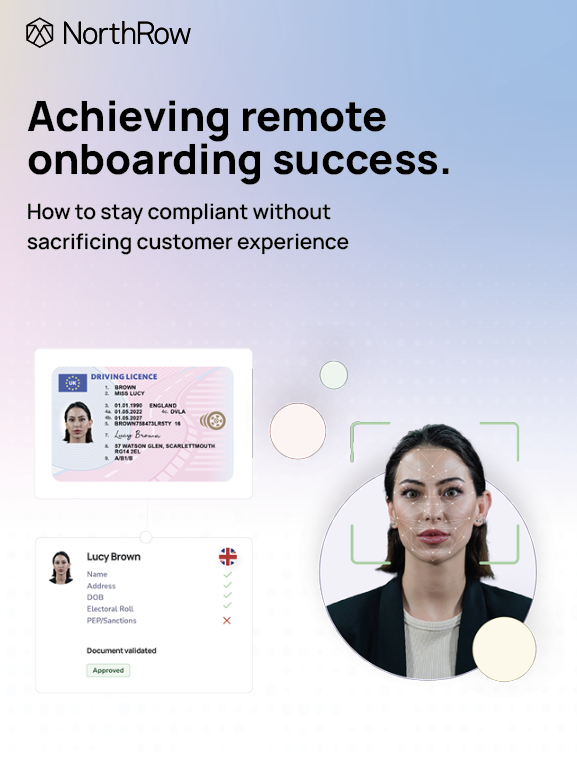Compliance teams form a critical function at financial institutions and other regulated firms, tasked with undertaking AML checks to identify illicit activities and financial crime in order to safeguard businesses from financial crime and mitigate risk.
In this article, you’ll find a handy anti-money laundering compliance checklist of the key areas, summarising good practices, helping firms to meet compliance requirements and instil confidence in operations.
What are AML checks?
An AML check refers to the process of verifying the identity of individuals or entities to prevent money laundering, terrorist financing, and other financial crimes. The purpose of an AML check is to ensure that businesses comply with regulatory requirements and maintain the integrity of the financial system.
During an AML check, financial institutions, such as banks, payment processors, and other regulated entities obligated to follow AML regulations, conduct due diligence on their customers. The process typically involves collecting information and documentation to establish the identity of customers and assessing the potential risk they pose in terms of money laundering or illicit activities.
Why are AML checks important for compliance?
Conducting an AML check forms a critical foundation in the detection and prevention of money laundering, fraud and terrorist financing, notwithstanding the impact that non-compliance can have on firms.
A poor AML process can lead to catastrophic effects, ranging from fines and bringing a company into disrepute, to criminal charges and even jail time. In 2022, banks and other financial institutions were fined almost £4bn for failings in anti-money laundering compliance.
An Anti-Money Laundering compliance checklist
Conducting an AML check should be a thorough process. The steps shown below outline the process in detail. If you’d like to have a PDF version on hand during your next AML, download our AML checklist.
1. Streamline your Know Your Customer (KYC) procedures
As an AML compliance manager, you are likely familiar with Know Your Customer (KYC) procedures, but the challenge lies in making them as efficient and thorough as possible. KYC is one of the most effective tools in identifying potential risks early. Your KYC procedures should focus on verifying customer identities and understanding the nature of their business activities.
To streamline the process:
- Ensure you collect essential customer information such as full names, addresses, date of birth, and the source of funds.
- Implement automated tools for identity verification to reduce human error and speed up customer onboarding.
- Segment customers based on risk profiles so that high-risk individuals are subject to enhanced due diligence (EDD).
- Regularly update customer information, especially for high-risk clients or those whose business activities have changed over time.
The key here is not only to verify your customers’ identities at the point of onboarding but also to keep an eye on their risk profiles over time. This is essential for spotting any signs of suspicious activity.
2. Adopt a risk-based approach for compliance
Not every customer poses the same level of risk, which is why a risk-based approach to AML compliance is so important. A one-size-fits-all approach to compliance could lead to unnecessary resource allocation or, worse, missed red flags.
To implement a risk-based approach:
- Assess customer risk levels based on factors such as geography, the nature of their business, and their source of wealth.
- Prioritise high-risk customers by conducting more frequent checks and applying enhanced due diligence where necessary.
- Utilise AML software to automate risk assessments and continuously monitor customers, so you can focus your attention on the highest-risk clients.
By focusing on high-risk customers, you’ll ensure that your compliance efforts are more targeted and efficient.
3. Continuously monitor customer activities
AML compliance isn’t a one-time process – it requires continuous vigilance. Ongoing monitoring of customer activities is essential for detecting suspicious activity that may not be immediately obvious at the point of onboarding. As an AML compliance manager, you need to make sure you have the right systems in place for monitoring and reporting.
To implement effective monitoring:
- Use monitoring software to detect changes or suspicious risk patterns, such as PEP status, adverse media mentions, sanctions hits, and so on.
- Set thresholds and alerts for customers that meet specific risk criteria, such as high-value transfers or transactions involving high-risk jurisdictions.
- Review flagged customers manually to assess whether they should be reported to the National Crime Agency (NCA) or other regulatory bodies.
Constant monitoring ensures that you can identify suspicious activities as soon as they happen, which is key to staying compliant.
4. Invest in regular employee training
Your employees are the first line of defense in spotting potential money laundering activities. Without proper training, they may miss critical red flags or fail to follow the correct reporting procedures. For you as an AML compliance manager, investing in regular and thorough training is non-negotiable.
To build a strong training programme:
- Provide comprehensive onboarding training for all employees on AML regulations, the company’s internal policies, and how to spot suspicious activities.
- Conduct annual refresher courses to ensure employees stay up-to-date with any regulatory changes or emerging risks.
- Offer specialised training for high-risk departments such as customer service or the monitoring team, who are more likely to encounter suspicious activity.
By ensuring that your team is well-versed in AML procedures, you create a culture of vigilance and compliance that will help prevent lapses in your AML programme.
5. Keep accurate and detailed records
Record-keeping is a cornerstone of AML compliance. As a compliance manager, you need to ensure that your company maintains accurate, up-to-date records of customer information, risk assessment, and any suspicious activities. These records may be needed in the event of an audit or investigation, and poor documentation can put your business at risk of non-compliance.
To implement best practices in record-keeping:
- Keep detailed customer profiles that include identification documents, history, and any risk assessments.
- Store records securely to ensure data protection, using encrypted databases or secure cloud systems.
- Set a retention policy that aligns with regulatory requirements (typically five years for most AML records), and make sure records are easily accessible when needed for audits or investigations.
Accurate and accessible record-keeping will give you the evidence you need to demonstrate compliance and respond to any queries from regulators.
6. Strengthen internal controls and reporting mechanisms
As an AML compliance manager, you’re responsible for creating a framework that prevents financial crimes within your organisation. Internal controls help establish the processes, policies, and checks that ensure compliance.
To strengthen internal controls:
- Designate a Money Laundering Reporting Officer (MLRO) who will take responsibility for overseeing suspicious activity reporting and ensuring compliance with regulatory requirements.
- Develop clear procedures for reporting suspicious activities, including how employees should escalate concerns and how reports should be documented.
- Implement automated systems that track changes in customer risk, flag suspicious activity, and alert your compliance team in real time.
- Review your internal controls regularly to ensure they’re still effective and compliant with the latest regulations.
These controls will help create a system where compliance is part of the company’s everyday operations, and suspicious activities are identified and reported in a timely manner.
7. Report suspicious activities promptly
Reporting suspicious activity is one of the most important aspects of AML compliance. In the UK, businesses are legally required to report suspicious activities to the NCA. If you spot anything unusual, you must file a Suspicious Activity Report (SAR) within a specified time frame.
To streamline your reporting process:
- Develop a clear reporting protocol that your team can follow when identifying suspicious activities.
- Train employees on how to recognise suspicious activity and how to escalate the issue to you or the designated MLRO.
- Use reporting tools that allow you to easily file SARs with the NCA and keep records of the reports for audit purposes.
By adhering to reporting guidelines, you’ll help protect your company from potential legal liabilities and ensure you comply with UK regulations.
8. Conduct regular audits and reviews
A comprehensive and well-documented AML programme is only effective if it’s regularly reviewed and updated. Regular audits will help you identify any gaps in your compliance efforts and ensure that your company is staying up to date with regulatory changes.
To maintain a strong AML programme:
- Schedule regular audits of your internal controls, KYC processes, and monitoring systems.
- Review compliance reports and SARs to identify any patterns or potential areas for improvement.
- Stay informed of regulatory changes by attending AML webinars, industry conferences, or subscribing to regulatory updates.
Regular audits and reviews help ensure that your AML compliance programme is always aligned with the latest best practices and regulations.
Final thoughts on AML checks
Conducting effective Anti-Money Laundering (AML) checks is not just a regulatory requirement but a crucial step to safeguard against financial crime and reputational damage.
Neglecting AML responsibilities can result in severe consequences, including significant fines and legal repercussions. It’s imperative that organisations prioritise AML compliance to protect their businesses and maintain the integrity of the financial system.
By following this robust checklist, you can protect your business from these risks and demonstrate your commitment to AML compliance.
Last updated: Tuesday 28 January 2025






